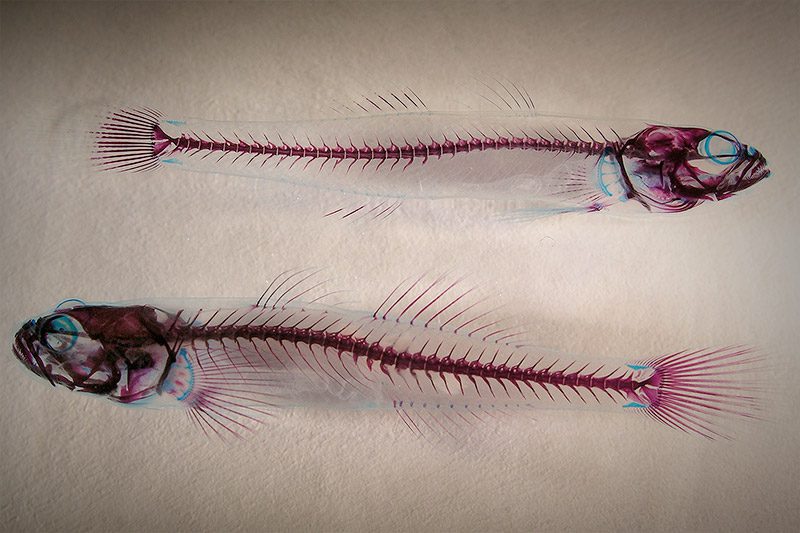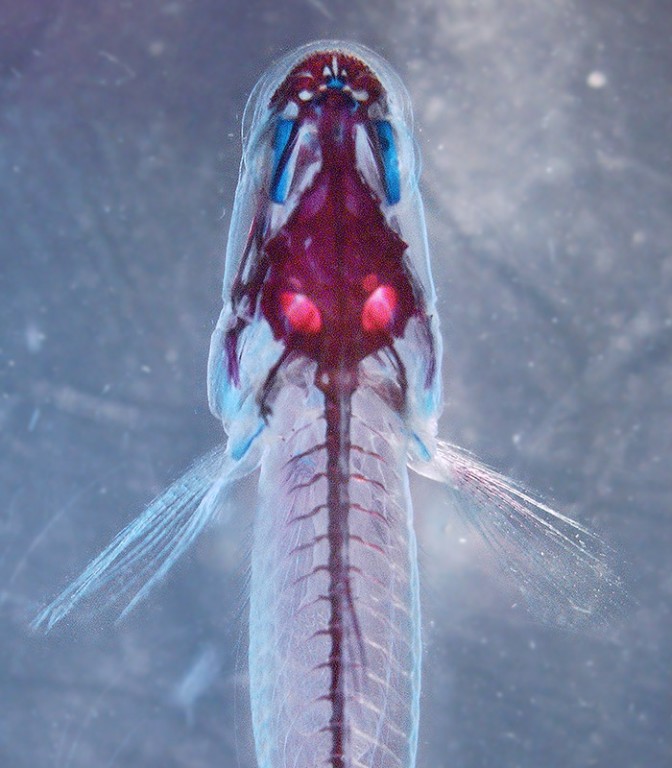Wednesday October 24, 2012

How do you peek inside a fish without cutting it open? Bathing a fish in chemicals through a technique called clearing and staining is one way to make internal skeletal features visible without any tedious and difficult dissections. The chemicals turn flesh translucent, and stain bones pinkish red and cartilage blue, as seen in these specimens of tidewater goby, Eucyclogobius newberryi. Researchers can use this technique to study the process of ossification, or the transition from cartilage to bone, to make sure that young fish are developing normally into adults. Clearing and staining is also an important tool for determining the taxonomic relationships between species. Such relationships are often based on meristic, or countable, characters, such as the number of vertebrae in the spine or rays in the fins. If you’ve ever tried counting tiny white bones in your fish dinner, you can imagine how much easier the task would be with a brightly colored skeleton.

Though there are many variations of this method, the general procedure involves preserving the specimen in formalin, then dehydrating it in alcohol (Potthoff 1984). Additional steps include a sequence of treatments with the chemicals Alcian blue and alizarin red that selectively stain components of cartilage and bone, respectively. Next, an enzyme called trypsin dissolves the flesh proteins, which “clears” the tissue, and bleaching with peroxide removes any remaining pigments (Potthoff 1984). Though this process sounds rather complicated and handling the various chemicals requires appropriate care, the necessary “ingredients” are often easy to find. As such, this method is a relatively quick way to reveal beautifully colored internal anatomy with all skeletal components in their natural place. It’s a vastly different perspective than a “typical” fish photo.
